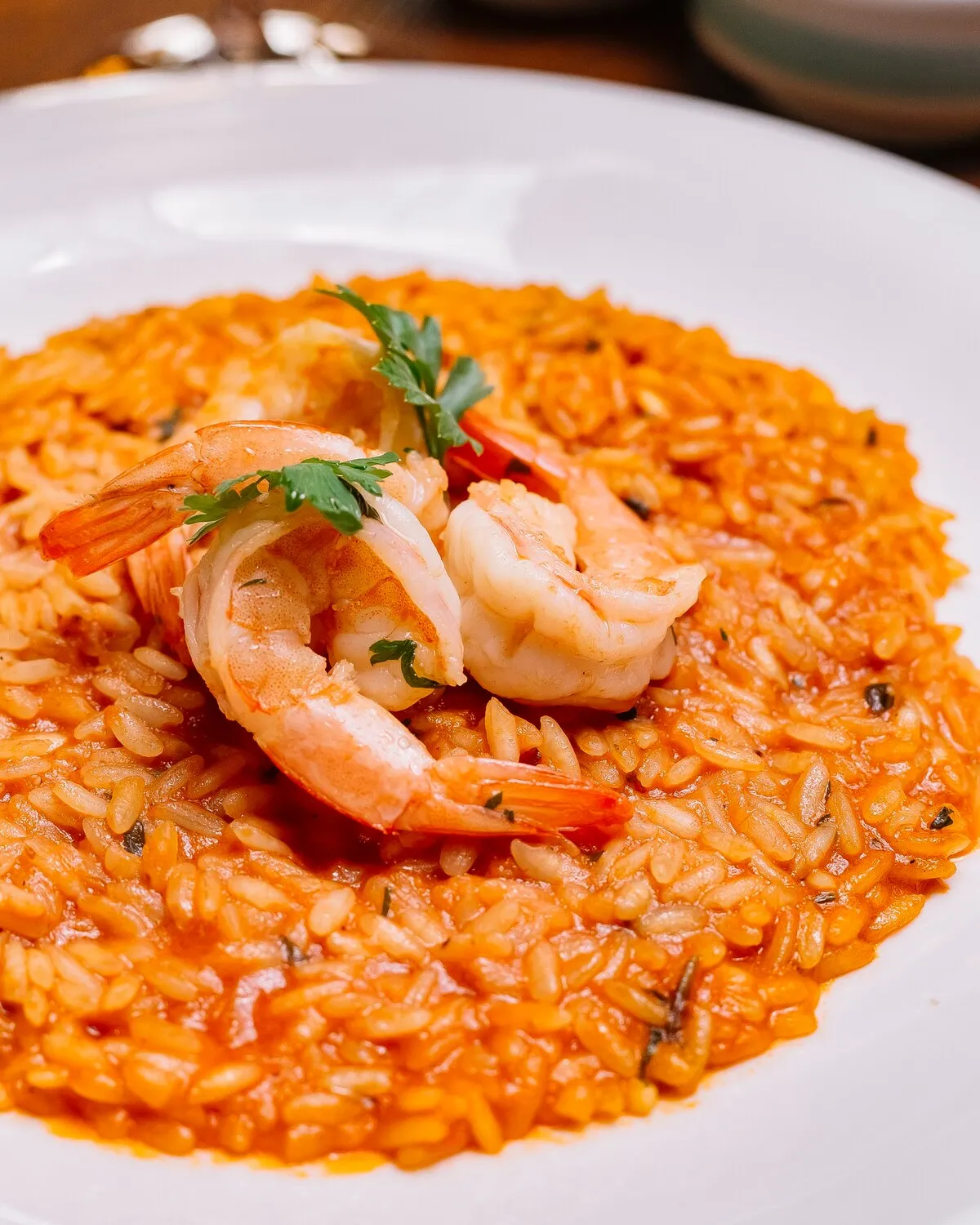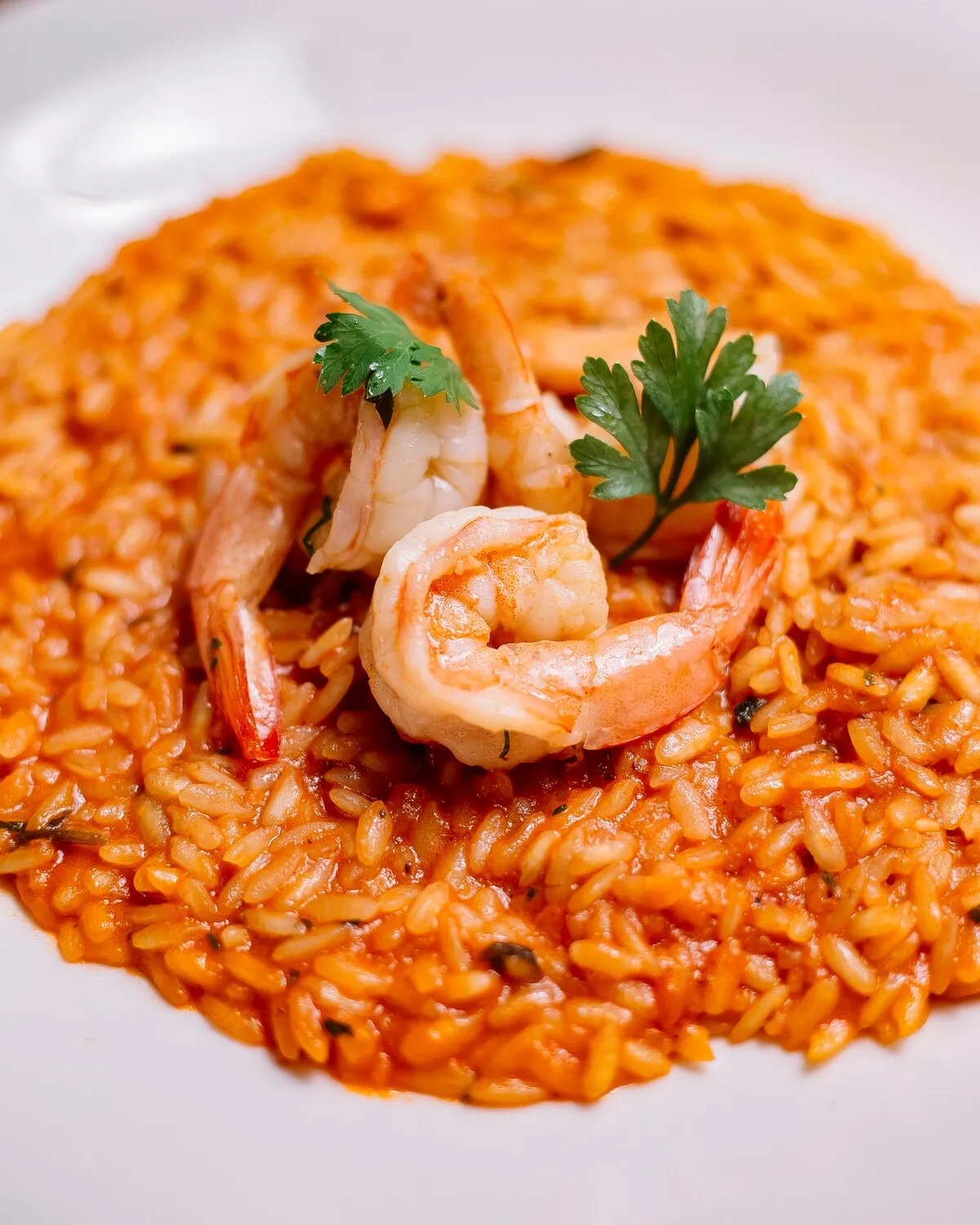
Risoto de Camarão
Shrimp Risotto.
Nutrition Facts
* The % Daily Value (DV) tells you how much a nutrient in a serving of food contributes to a daily diet. 2,000 calories a day is used for general nutrition advice.
Risotto, the base for Risoto de Camarão, has its roots in Northern Italy, specifically the rice-growing regions of Piedmont and Lombardy. The introduction of rice to Italy is attributed to the Arabs during the Middle Ages. The creamy texture characteristic of risotto developed over time, likely influenced by techniques used in French cuisine. Shrimp, readily available in coastal areas, became a natural addition, evolving into the specific dish, Risoto de Camarão.
Risoto de Camarão, while enjoyed globally, holds a special place in Italian cuisine and culinary traditions. It is often served as a 'primo piatto' (first course) in a multi-course meal and is associated with special occasions and celebrations.
Family Gatherings
Risoto de Camarão, like many Italian dishes, is often prepared and enjoyed during family gatherings. The preparation process itself can be a communal activity, with different family members contributing to the meal.
Regional Variations
While the basic concept remains the same, Risoto de Camarão can vary regionally in Italy. Different regions may use different types of shrimp, rice varieties, or incorporate local herbs and spices.
Symbol of Hospitality
Offering Risoto de Camarão to guests is a gesture of hospitality and demonstrates care and attention to detail. The dish's elegant presentation and satisfying flavors make it a popular choice for entertaining.
Risoto de Camarão is a symphony of savory and delicate flavors, combining the creamy richness of risotto with the sweet and briny taste of shrimp.
The primary flavor profile revolves around the sweetness of fresh shrimp, complemented by the umami depth of a well-made risotto. White wine contributes acidity and aromatic complexity, while garlic and shallots provide a savory base. Parmesan cheese adds a salty, nutty richness. Herbs like parsley and chives lend freshness and brightness, balancing the overall flavor profile. A touch of lemon zest or juice often brightens the dish. The seafood broth used to cook the rice imparts a subtle but crucial marine essence.
Rice Selection
Use Arborio, Carnaroli, or Vialone Nano rice. These varieties have high starch content, which contributes to the creamy texture characteristic of risotto.
Stock Quality
Use high-quality seafood or shrimp stock. Homemade stock is ideal, but a good quality store-bought option will work well. Warm the stock before adding it to the rice.
Toasting the Rice
Toast the rice in olive oil or butter before adding the liquid. This helps to develop its flavor and prevents it from becoming mushy.
Gradual Liquid Addition
Add the stock gradually, one ladle at a time, stirring constantly. Allow each addition to be absorbed before adding the next. This is crucial for achieving the creamy texture.
Shrimp Cooking
Don't overcook the shrimp. Cook them separately and add them to the risotto towards the end of cooking to prevent them from becoming rubbery.
Mantecaura (Final Stir)
The 'mantecatura' is the final stirring with butter and Parmesan cheese to create the ultimate creaminess and richness. Do this off the heat.
Explore additional Risotto dishes and restaurants
Explore RisottoDiscover top dining spots and culinary experiences in Teresina.
Explore TeresinaLearn more about the food culture, restaurant scene, and culinary heritage of Brazil.
Explore Brazil
